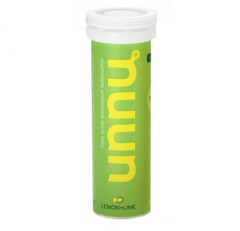Mountain Biking in Winter
Crucial Advice for Cold Weather Mountain Bike Adventures
Before you head out in the snow and frost, read and remember this top ten.
1. Oil hardens, air pressure drops: Because your bike works in summer, is no guarantee it will when the temperature drops. Especially if you drive with your bike on the roof or trailer. The grease and oil in your hubs, bottom bracket, and shocks will become more viscous. But as friction heats it up the effect will lessen. Pay more attention to the air pressure in your forks, and shock, and think about warming them up before pumping them full of air you won't need later on.
2. Water bottles and hydration will tubes freeze: Simply blow the water back into your bladder after you drink, to prevent the tube from freezing. Keep sipping from a bike mounted bottle, and be paranoid. If you keep it clear of ice you may get away with it. Once it's frozen, you have no chance of getting water. You can find insulated bottles if you insist, but it is the small drops around the mouthpiece that freeze up pretty much regardless. Roadies can keep a small bottle in their jersey pocket, but this is really not a great idea on a MTB. A salty nuun tab will help. 
3. Speed and performance drops: If you plan your rides for an average 12 - 15 kph, drop this to maybe 10 - 13 kph. Mud, snow, cold bodies and extra faff sessions will all eat into your normal ride time. Carry a rear flasher just in case you need to dash home in twilight.
4. Up skill & practice: Winter is not the time to be pulling your best drops and tricks, or pushing a Strava PB. A spill in cold weather and a minor concussion or bleed can turn really serious, really fast. Help will take longer to reach you, and hyperthermia will be setting in fast. Instead, practice your skills. Track stand without hands, manual for a little longer, replay the berms, whatever, come the summer your practice will pay off with more speed and confidence.
5. Check your brakes: With all that mud and grit about, you will grind through brake pads much faster than usual. Your brakes will get covered in gunk, making it hard to asses how worn they are. Don't be lazy, clean them out, and check your pads. Choose Sintered Pads, as these will last longer in gritty conditions, and heat dissipation won't be such a problem in winter.
6. Apply Generously: Don't be shy with the GT85! A thin water dispersing spray lube like GT85 is essential. After your ride, even if you haven't cleaned your bike, spray GT85 everywhere. Use the little tube to reach into suspension bearings, bottom brackets and jockey wheels. Make sure your chain is well oiled before you put your bike away.

7. Gloves & Feet: You could write a book on this subject, but briefly; Dry hands are warm hands. Your warmest gloves are useless if the lining becomes saturated in your own sweat. Water strips heat from your body, fast. Wear gloves appropriate for the temperature, and carry spares. The only cure for cold hands, is dry gloves. The same goes for feet. Long waterproof socks, Waterproof winter boots, or Neoprene overshoes are a must have.
8. Snowy navigation: If there is fresh snow on the ground, take a compass. When following a trail in open ground don't rely on seeing other tracks, or that they are going the right way. The only way to know for sure if your breaking trail, is to get your compass out and check your direction of travel matches the map.

9. Carry a shelter: Going fast and light is great until something breaks. The mapdec LESS shelter is only 374g, and it can shelter 6 people. If riders are getting cold, get them inside a shelter while you fix a broken bike. Even the 5 mins it takes to fix a picture will give a welcome boost of shared body heat.
10. Carry a sledge: Because when you see that awesome snow clad slope you will regret it if you haven't.
